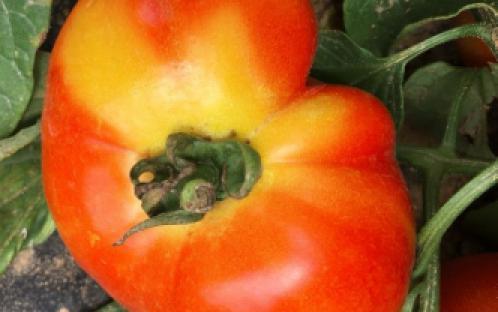Why So Little Yellow Shoulders in Tomatoes This Year? - 2016
Normally at this time of year, I’d be writing about how bad yellow shoulders and other fruit ripening problems are in Maryland tomatoes. But this has been a strange season with May weather in March and March weather in May, which caused a great deal of catfacing problems this year. However, except for a few fields in a few places there have been far fewer troubles with tomato yellow shoulders or fruit ripening problems than we normally see this time of year—at least for now. Why is this? The one big thing I have found is that when I randomly take petiole samples from fields I visit, they have come back with potassium levels at or above 3.5% with some fields at 6% in mid-July. This is extraordinary, normally potassium (K) levels drop precipitously after the plant puts on a heavy fruit load in July. The levels drop down to somewhere around 2-3% in July when they were at 4-6% just a month earlier. This drop in K is not enough to show up as a deficiency in the plant, but shows up in problems with fruit ripening.
Even in my tomato research plots, where I have seen K levels drop over the last 10 years to an average of 1.8% in July and August, K levels were at 6% or above this July and early August. So why was there no, or just a small drop in K values this season, in many of our tomato fields? I’d like to think that is was all the talks that we have given over the years about making sure your K levels do not drop in tomatoes and this is what I tell my bosses. But, that unfortunately does not explain it.
Since the small drop in K is happening over a fairly large area across many types of production systems I have to think it is environmentally induced. Exactly what in this strange year’s weather patterns allowed plants to continue to take up K in the amount the plant and fruit needed is something I’ll be looking at in weather data over the next few months. If nothing else, this odd season does show that if K levels are maintained in tomatoes through fruiting, there is a corresponding reduction in fruit ripening problems.
